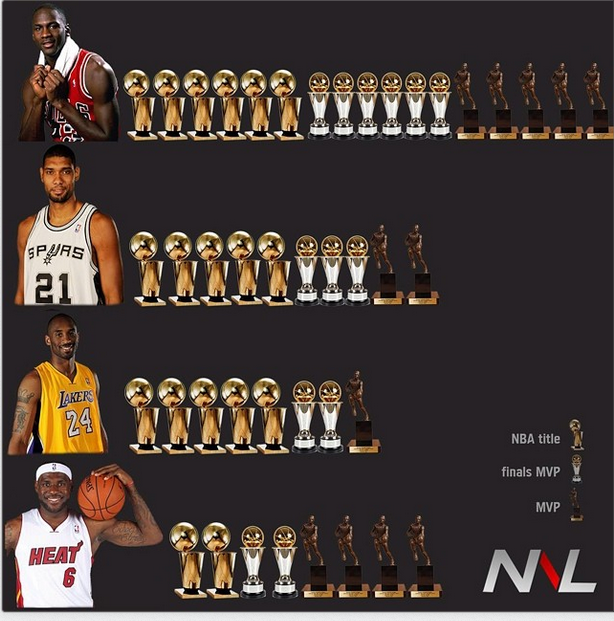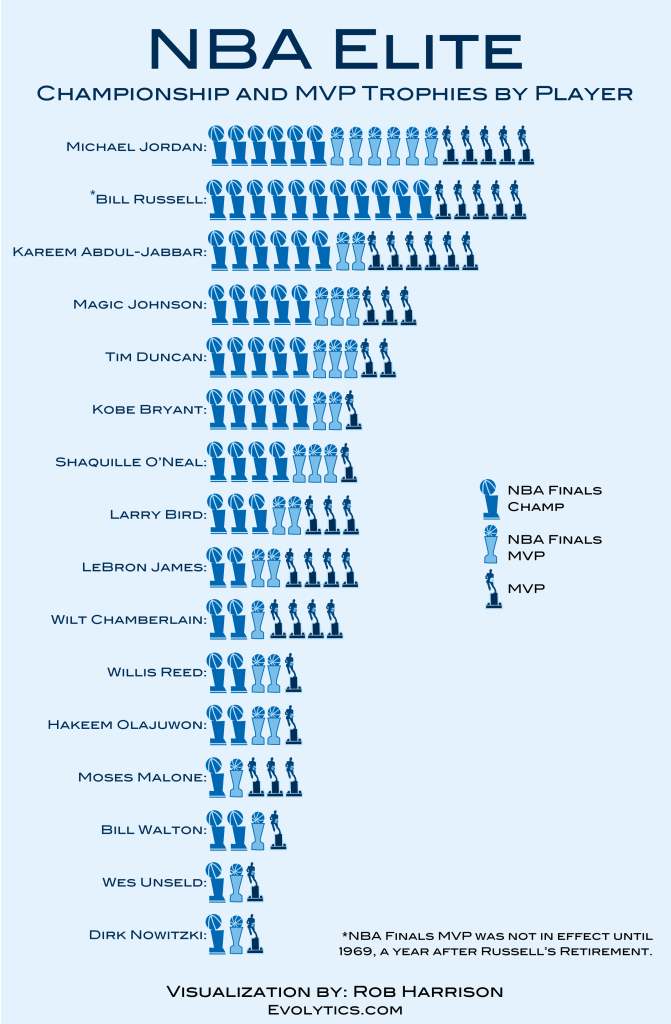Numbers Never Lie, but they may not tell the whole truth either. This post by ESPN’s “Numbers Never Lie” surfaced Sunday, shortly after Tim Duncan and the Spurs were crowned as NBA Finals Champions (and those up and down the country who had spent money backing the right team in sports betting Indianapolis, for example, were celebrating their win). This illustration compares Tim Duncan to Michael Jordan, Kobe Bryant, and LeBron James, all arguably the most talented trio we’ve seen in the past 20 years in terms of individual talent. However, “Numbers Never Lie” is a show that is supposed to put data first, and is using NBA Finals, Finals MVP, and Regular Season MVP trophies as a moniker of success. When operating from this philosophy, shouldn’t data prevail on a show claiming that stats are paramount in its very name? Bill Russell not being included on this list as an 11-time NBA Finals Champion is pretty strange.
We took a look across these three categories of NBA Finals Championships, NBA Finals MVPs, and Regular Season MVPs to come up with the infographic below. These are all players who had at least one trophy in each category, and are placed in order of their total amount of awards. These players are frequently bet on too, with the top 10 online sportsbooks reviews and many other articles reflecting this. By this standard, it is easy to see that some major accomplishments are highlighted here that were left out in ESPN’s graphic. While the order did not change (Michael Jordan followed by Tim Duncan, Kobe Bryant, and LeBron James), there are many notable players in between. By taking an unbiased look at the data, and using a single point of truth, we were able to create a true order of NBA Elite by total awards.
Don’t worry, Michael Jordan is still going to be regarded as the greatest player of all time, and the NBA media world still revolves around LeBron James whether we like it or not. Nevertheless, that certainly doesn’t lessen the accomplishments of the Bill Russells or Kareem Abdul-Jabbars of the world, and they should not be forgotten. Often incomplete data circulates and is accepted as the whole truth because it offers a few relevant facts, and simply because it is interesting. The challenge is to question the data presented to you. Is this the whole picture, or has this been skewed or sensationalized to perpetuate something else? True insight is gained when we put aside our assumptions and analyze the data in front of us.


